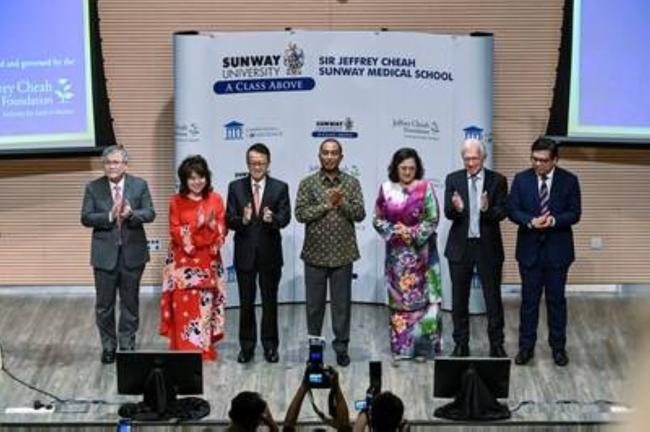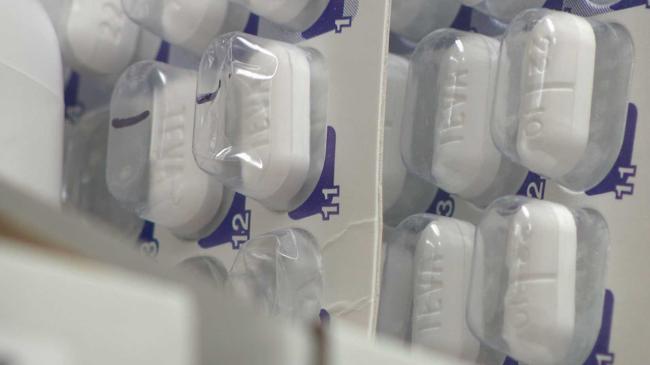Summary
Sunway University proudly announces the launch of the Sir Jeffrey Cheah Sunway Medical School, a bold new initiative that signals a transformative leap in Malaysia’s medical education landscape. With a firm focus on teaching and research excellence,
Source: The Manila Times

AI News Q&A (Free Content)
Q1: What key factors have contributed to Malaysia's transformation into a leading destination for medical education and healthcare innovation, as exemplified by the launch of the Sir Jeffrey Cheah Sunway Medical School?
A1: Malaysia's transformation in healthcare education is driven by the integration of modern technology, partnerships with international institutions, and a strong governmental focus on both public and private sector development. The launch of the Sir Jeffrey Cheah Sunway Medical School exemplifies these trends by emphasizing teaching and research excellence, and leveraging Malaysia’s dual healthcare system, which includes both public universal coverage and a robust private sector. The continuous rise in medical tourism and the adoption of advanced medical technologies further highlight Malaysia’s commitment to healthcare innovation. [Healthcare in Malaysia]
Q2: How does the dual-tier healthcare system in Malaysia impact the accessibility and quality of medical services for its citizens?
A2: Malaysia’s dual-tier healthcare system allows citizens to access basic healthcare services through a government-run public system, which is funded by general taxation and provides either free or low-fee services. However, high demand and long wait times in the public system have led to the widespread adoption of private health insurance, enabling access to faster and more specialized treatments in private hospitals. This system helps balance accessibility for all citizens while providing higher quality and more diverse services for those who can afford private care. [Healthcare in Malaysia]
Q3: What are the latest advancements in anatomy education for medical students in Malaysia, according to recent scholarly research?
A3: A 2024 study introduced a desktop-based Virtual Reality (VR) system for anatomy education, designed to enhance medical students' interactive learning experiences. The Virtual Anatomy Lab allows students to manipulate 3D models, such as a human skull, using standard devices. Feedback from Malaysian medical students indicated the VR system improved engagement and learning outcomes, though accessibility and cost remain challenges. This innovation represents a shift towards more technology-driven, active learning in Malaysian medical education. [Enhancing Medical Anatomy Education through Virtual Reality (VR): Design, Development, and Evaluation]
Q4: How does the latest research address the use of deep learning and artificial intelligence in healthcare, particularly in Malaysia?
A4: Recent reviews highlight significant progress in applying deep learning to healthcare, especially in areas like 3D human pose estimation for patient monitoring and rehabilitation. These technologies improve accuracy and real-time analysis in clinical settings. However, ongoing challenges include ensuring data privacy, model generalization, and handling complex or occluded visual data. While not Malaysia-specific, these advances are increasingly being integrated into medical education and practice in the region. [Review of models for estimating 3D human pose using deep learning]
Q5: What are the main challenges faced by refugee communities in Malaysia regarding access to healthcare and education?
A5: Rohingya refugees in Malaysia, who are not legally recognized, face significant barriers to healthcare and education. Their status results in limited access to public resources, increased social isolation, and unique security and privacy concerns. Research suggests there is a pressing need for human-centered technological solutions to help overcome these barriers and improve their access to vital services. [Investigating Concerns of Security and Privacy Among Rohingya Refugees in Malaysia]
Q6: How is Malaysia’s healthcare insurance landscape adapting to the needs of its growing population and the limitations of the public health system?
A6: Due to persistent limitations in the public healthcare system, such as high demand and long waits, private health insurance adoption is widespread in Malaysia. Insurance enables access to private providers and more specialized treatments, helping to manage the costs associated with private healthcare services. This adaptation is crucial for accommodating the diverse needs of Malaysia’s growing population. [Healthcare in Malaysia]
Q7: What is the role and global significance of Malaysia's largest private healthcare group in advancing healthcare services and education?
A7: IHH Healthcare Berhad, headquartered in Kuala Lumpur, is Asia’s largest private healthcare group, operating over 80 hospitals in 10 countries. It plays a key role in elevating healthcare standards, promoting medical tourism, and supporting education and training of medical professionals across the region. Its international footprint and partnerships reinforce Malaysia’s position as a hub for medical excellence and innovation. [IHH Healthcare]
References:
- Healthcare in Malaysia, https://en.wikipedia.org/wiki/Healthcare_in_Malaysia
- IHH Healthcare, https://en.wikipedia.org/wiki/IHH_Healthcare




